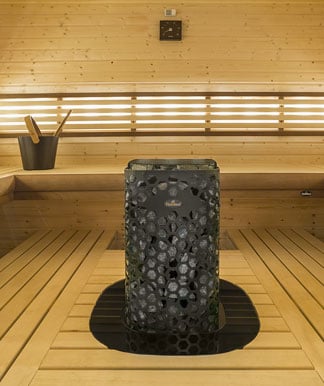What Does Traditional Sauna Do?
Table of ContentsThe 15-Second Trick For Traditional SaunaThe Greatest Guide To Traditional SaunaTraditional Sauna Can Be Fun For AnyoneSome Ideas on Traditional Sauna You Should Know
The majority of the weight lost in a sauna is water loss and is re-gained upon rehydrating. However, certainly sauna can be an important part of a healthy weight management program. To check out the distinctions in between standard and IR saunas, I will separate these into verifiable, theoretical, and produced differences.Thus, the most popular factor in the saunawhich goes to the ceiling directly over the sauna heateris generally between 185 and 190 F. Traditional Sauna. Claims that a conventional sauna surpasses 200 F is merely not true and not relevant for electric saunas marketed in the United States. The temperature level for a far-infrared sauna is normally set between 120 and 140 F; nonetheless, unlike the conventional sauna, the objective in and IR area is not to accomplish a high temperature
Due to this, the temperature level difference is almost unnecessary, considering that excessive sweating results in both sauna kinds, however the approach of heating the body is various. In an IR sauna the bather will feel warm and will sweat a lot, but at much reduced temperature levels. Therefore, if the goal is to invest longer amount of times in the sauna, the IR sauna is a good choice.

The Facts About Traditional Sauna Revealed
When the high temperature is achieved, the elements cycle on and off to keep the high temperature. Many standard sauna customers appreciate putting water over the rocks to develop steam to raise sauna humidity degrees. The benefits of pouring water over the rocks consist of: making the room a lot more comfortable, dampening the nasal flows, and permitting the use of aromatherapy by blending important oils with the water.
In a far-infrared sauna, the warm front permeate the body to successfully heat the body and increase the body core temperature. To accomplish this enhanced temperature, Far-infrared emitters create infrared energy which is close to the very same wavelength as that which the body normally emitsoften described as the "Essential Array" of 7 to 14 microns), so the energy is well received by the body.
When the power gets in the body, it creates the body temperature to enhance and eventually causes sweating. In an infrared sauna it is necessary for the emitters/heaters to stay on nearly regularly. Given that there is no mass of rocks to maintain warmth, the sauna will certainly cool if the emitters shut off.
As discussed above, the sauna bather in an infrared space wishes to position himself in front of running emitters to get maximum benefit from the heat. The home heating time for both spaces can be very various, depending upon exactly how the rooms are made use of. For a traditional sauna, a bather should enable 30-40 minutes for the room to attain a wanted temperature and to effectively pre-heat the rocks.
Traditional Sauna Fundamentals Explained
A well created sauna will usually attain a temperature level of 150-160 F in concerning 30-40 mins. For hotter temperatures, the area may require to warm for a longer period.
To some, 15 mins was "lost" while the infrared energy heated the wood panels instead than heating a body, while others locate a pre-heated room to be extra comfy and think a raised starting temperature level is required to start perspiring. The length of advised Click Here use for each and every room is approximately the very same (10-15 minutes per session); nonetheless, due to the lower air temperature levels and the ability to feel the effects of infrared warm much faster than a standard sauna, it is not uncommon for an individual to invest an overall of 20-30 minutes in an infrared sauna.
Traditional saunas have a tendency to be larger (therefore make use of even more electrical energy) than infrared saunas, although conventional saunas are certainly offered in one and 2 person dimensions as well. For a two-person standard sauna, 5x6 or 5x7 dimension is most popular. The leading bench can conveniently seat two or 3 individuals find more and is additionally long sufficient to lie down throughout the sauna session.


The average cost per kWH of electrical power in the U.S. is around $0.11, so a 4.5 kW heater will certainly cost roughly $.50 to compete one hour, if the heater runs continuously for one hour. Usually a sauna heating unit will certainly run for 75% of the initial hour and 50% of subsequent hours on because the components cycle once the set temperature level is achieved.
Top Guidelines Of Traditional Sauna
A two individual far-infrared space is typically literally smaller sized than a typical sauna, usually about 4' x 4' or smaller. The IR furnace is typically 1.5-1.7 kW using a 120 volt 15 amp plug-in service. Since the area can be utilized faster than a sauna space, we will think the area is utilized for to of an hour including warm up time.
There is a hardly ever discussed difference in the social experience in between the 2 spaces. While our society has actually lost some of the social benefit of the traditional sauna experience, it can be very socially fulfilling. From household time in the sauna, to heart-felt conversations with considerable others, to sauna partiesthe conventional sauna experience can lead to intimate socializing.
Most greater end infrared areas consist of tinted light therapy, stereo and full-glass fronts. The dimension of a lot of spaces permit 2 individuals to easily utilize the space, while some layouts might permit for a third or fourth person to use the area. Custom-made infrared spaces are likewise available, with room sizes readily available up to 7' x 8' x find more info 7' high.